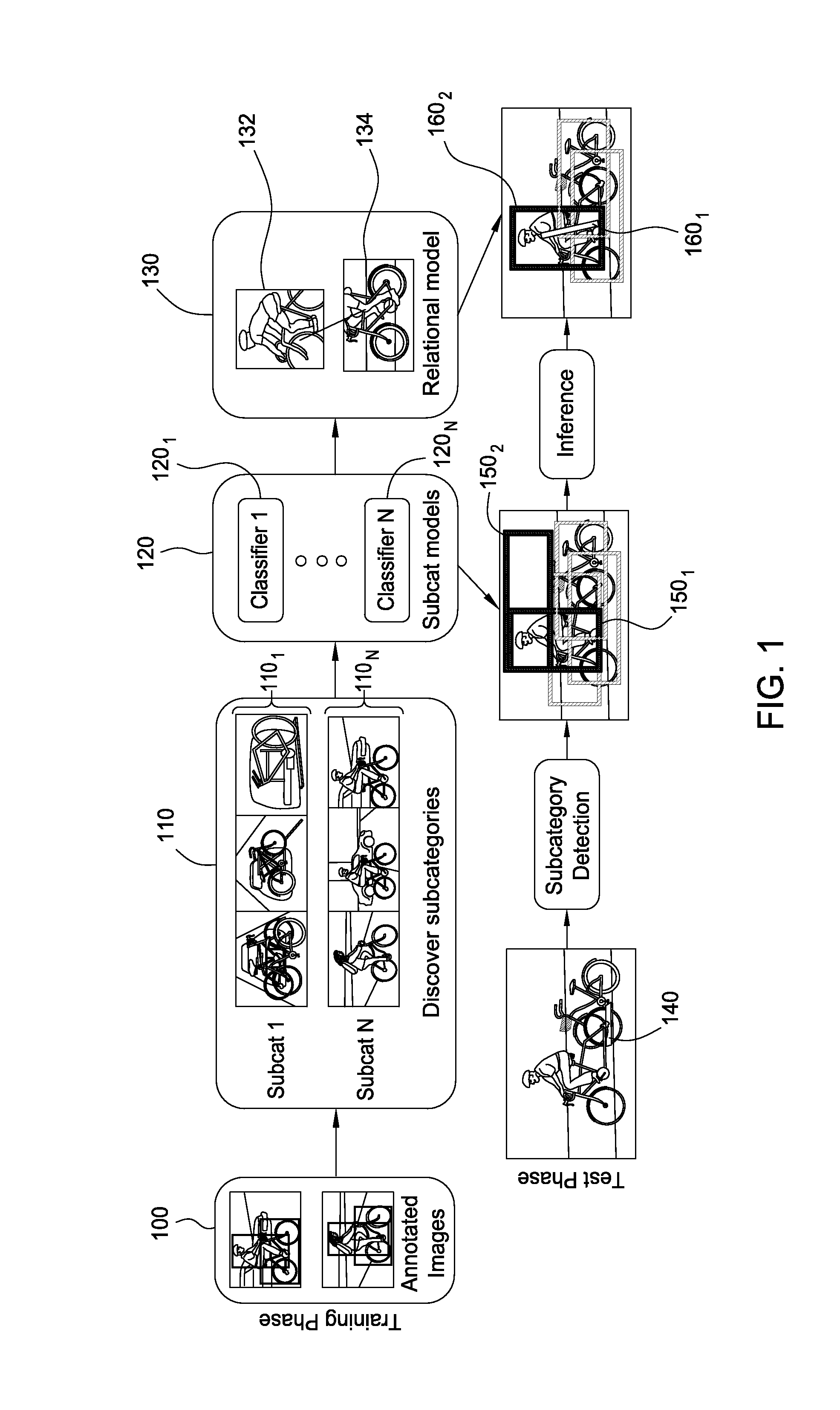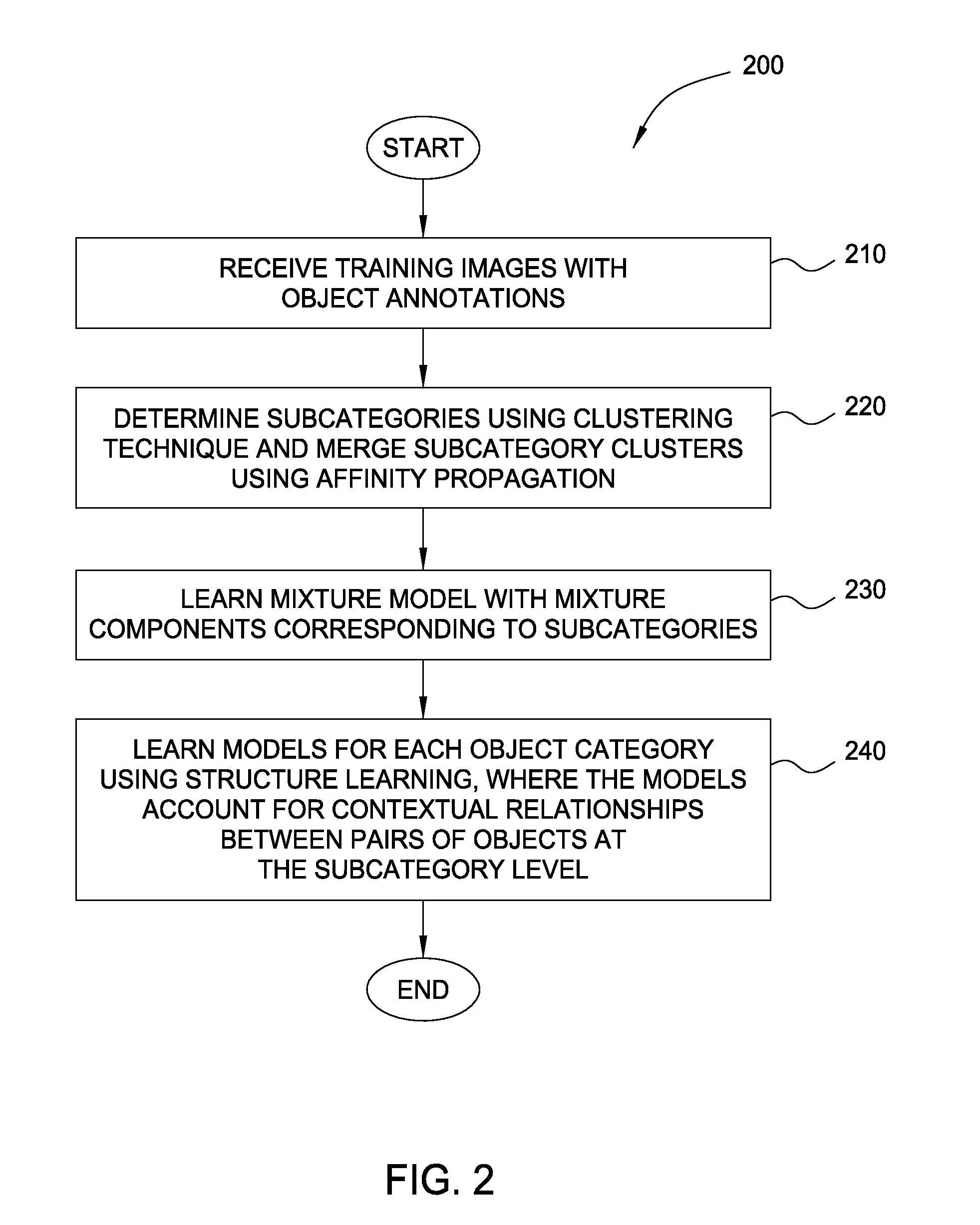Multi-level framework for object detection
a multi-level framework and object detection technology, applied in the field of images for detecting objects, can solve the problem that the number of subcategories may not adequately reflect the actual appearance variation of objects, and achieve the effect of enhancing detection
- Summary
- Abstract
- Description
- Claims
- Application Information
AI Technical Summary
Benefits of technology
Problems solved by technology
Method used
Image
Examples
Embodiment Construction
[0013]Embodiments disclosed herein provide techniques for detecting objects in images, with the goal being to train models capable of detecting specific objects (e.g., persons, bicycles, or any other coherent structure) in input images. In one embodiment, an object detection application receives a set of training images with object annotations indicating bounding boxes for objects that appear in the images and labels of the categories to which those objects belong (e.g., “person,”“bicycle,” etc.). Given these training images and object annotations, the object detection application automatically discovers subcategories of objects via a clustering technique. As used herein, “subcategories” refer to visual clusters that capture appearance variations of an object in multiple images. For example, a “person” object may include subcategories of “sitting,”“riding,”“standing,”“facing forward,” etc. which are associated with different ways a “person” may appear in an image. Note, the labels o...
PUM
 Login to View More
Login to View More Abstract
Description
Claims
Application Information
 Login to View More
Login to View More - R&D
- Intellectual Property
- Life Sciences
- Materials
- Tech Scout
- Unparalleled Data Quality
- Higher Quality Content
- 60% Fewer Hallucinations
Browse by: Latest US Patents, China's latest patents, Technical Efficacy Thesaurus, Application Domain, Technology Topic, Popular Technical Reports.
© 2025 PatSnap. All rights reserved.Legal|Privacy policy|Modern Slavery Act Transparency Statement|Sitemap|About US| Contact US: help@patsnap.com



